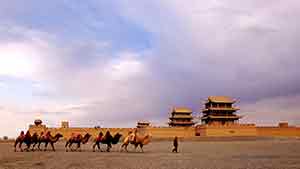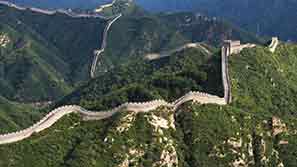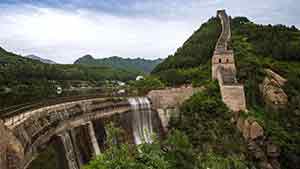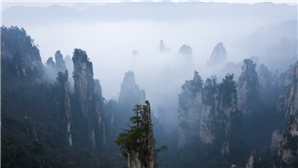Jiayu Pass 📺️

Jiayu Pass or About (simplified Chinese: 嘉峪关; traditional Chinese: 嘉峪關; pinyin: Jiāyù Guān) is the first frontier fortress at the west end of the Ming dynasty Great Wall, near the city of Jiayuguan in Gansu province. Along with Juyong Pass and Shanhai Pass, it is one of the main passes of the Great Wall.
The pass is located at the narrowest point of the western section of the Hexi Corridor, 6 kilometres (3.7 mi) southwest of the city of Jiayuguan in Gansu. The structure lies between two hills, one of which is called Jiayuguan Pass. It was built near an oasis that was then on the extreme western edge of China.
The pass is trapezoid-shaped with a perimeter of 733 metres (2,405 ft) and an area of more than 33,500 square metres (361,000 sq ft). The length of the city wall is 733 metres (2,405 ft) and the height is 11 metres (36 ft).
There are two gates: one on the east side of the pass and the other on the west side. On each gate there is a building. An inscription of "Jiayuguan" in Chinese is written on a tablet at the building at the west gate. The south and north sides of the pass are connected to the Great Wall. There is a turret on each corner of the pass. On the north side, inside the two gates, there are wide roads leading to the top of the pass.
Jiayuguan consisted of three defense lines: an inner city, an outer city, and a moat.
When famous traveler Mildred Cable first visited Jiayuguan in 1923, she described it as
To the north of the central arch was a turreted watch-tower, and from it the long line of the wall dipped into a valley, climbed a hill and vanished over its summit. Then a few poplar trees came in sight, and it was evident from the shade of green at the foot of the wall that here was grass and water. Farther on a patch of wild irises spread a carpet of blue by the roadside, just where the cart passed under an ornamental memorial arch and lurched across a rickety bridge over a bubbling stream.






